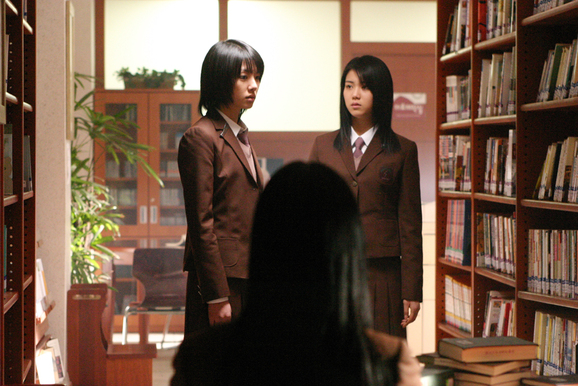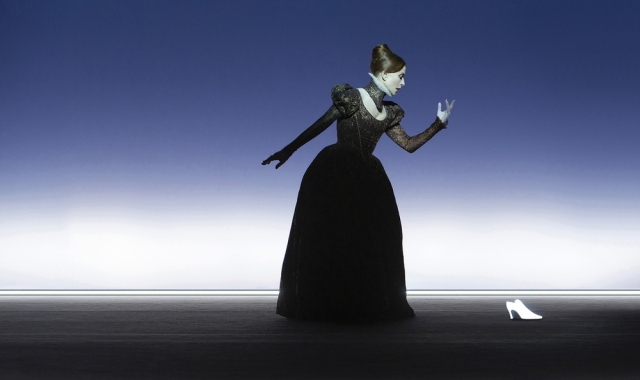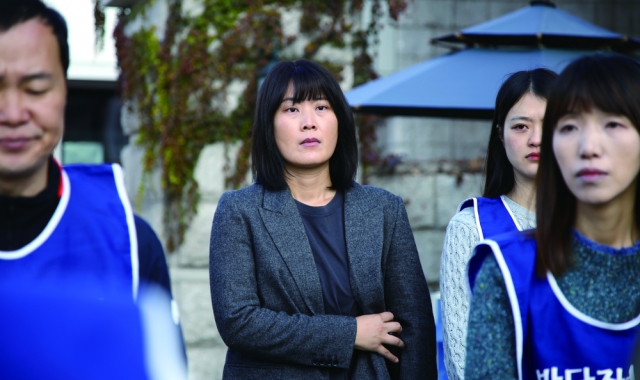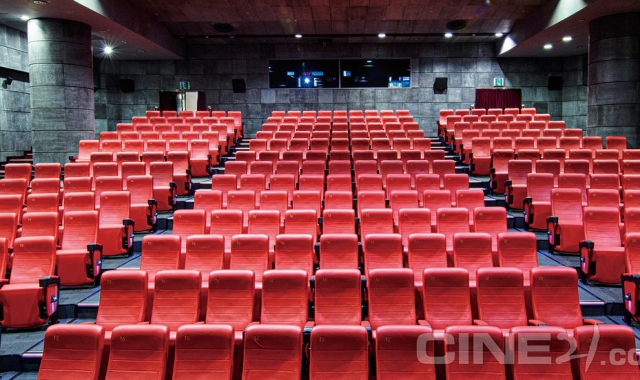
지난주(7월 중순) 부천국제판타스틱영화제를 다녀오면서 이번 여름 한국 호러영화의 수확고를 확인할 기회를 가졌다. <분홍신>과 <여고괴담4: 목소리>에 근거해볼 때, 올해의 수확은 지난해 여름보다 나아 보인다. 한국 호러가 홀수 해(1999, 2001, 2003, 2005년)에 제일 잘 나온다는 한 동료의 가설을 확인시켜주는 것 같다.
이 두 영화를 연속적으로 봤을 때 아시아와 서구 호러영화간의 주요한 차이를 다시 한번 생각하게 됐다. 서구 비평가들이 최근 이 장르의 아시아영화를 “호러영화”보다는 “사이코스릴러”나 “사이코드라마”라고 부르는 것은 우연이 아니다. 아시아 감독들은 분명 관객을 공포에 떨게 할 때보다 다양한 접근들을 취하고 있다는 것을 확인시켜주는 일이다.
<분홍신>과 <여고괴담4…>는 영화적 스타일 면에선 서로 완전히 다르지만, 관객을 불안하게 만드는 효과에서는 상당히 유사하다. <분홍신>에서 그리고 있는 모녀관계의 폭력성은 잠시 제쳐두고라도, 이 영화는 서구 호러영화에서는 거의 볼 수 없는 신비롭고 심리적인(보통 한국영화에 보이는 비명 지르는 예쁜 여자들과는 사뭇 다른 김혜수의 성숙한 연기에 상당히 힘입은) 강렬함을 지니고 있다.
표면적으로 보면 <여고괴담4…>는 반대의 접근법을 취하는 것 같다. 직접적인 시각적 충격은 거의 없고, 피도 훨씬 적게 보이며, 차갑고 낮은 채도의 <분홍신>과는 거리가 먼 꿈결같은 색채들이 펼쳐진다. 그러나 영화가 힘을 받는 부분에서 형이상학적인 강렬함이- 여섯살짜리 딸과 엄마보다는 10대의 사춘기 소녀들을 중심으로- 강조된다는 것은 같다.
사실 이런 감정적인 강렬함 자체가 바로 이 영화들이라고 할 수 있다. 우연치 않게도 <여고괴담> 시리즈 첫 작품에서 조감독으로 일했던 최익환 감독은 이 영화로 데뷔하면서 십대 호르몬에 의한 혼란을 ‘호러’ 주요 소재로 사용하면서 엄청난 위험을 무릅쓰기도 했다. 이 영화는 결국 마지막 장면에 가서는 일반적인 호러 효과를 낼 필요를 느꼈던 <여고괴담 두 번째 이야기>보다도 훨씬 더 하다. <여고괴담4…>는 마지막까지 억제된 접근을 유지한다.
많은 아시아 호러영화들의 이런 형이상학적인 면이 할리우드 리메이크에서는 살아남지 못한다는 사실은 놀랍지 않다. 서양 감독들- 특히 미국 감독들은 정돈된 설명을 제공하고 훨씬 더 간단한, 플롯을 기반으로 한 충격으로 좀더 평범한 호러에 집중하는 경향이 있다. 최근 <검은 물 밑에서>의 미국판 리메이크는 피부 위를 스멀스멀 기어다니는 것 같았던 일본 원작영화의 감정적인 미묘함과 섬세한 생략기법을 전혀 갖고 가지 않았다. <링>의 리메이크 역시 저기 저 깊은 곳을 휘젓는 것 같은 감정적인 흐름을 다 벗겨내고 일본 원작에서 플롯만을 가져와 단순히 기능적인 영화를 만들었다.
영어권 호러영화 중 위의 아시아 모델에 가장 가까운 것은 영국에서 2주 전 호평을 받으면서 개봉한 <The Descent>이다. 이 영화는, 익살맞게 피범벅인 늑대인간 호러물 <독 솔져>로 3년 전에 데뷔했던 젊은 영국 감독이자 시나리오 작가인 닐 마셜이 만든 두 번째 작품으로, 동굴탐사에 나선 여섯명의 여자 친구들이 동굴 안에서 길을 잃고 헤맬 때 기대하지 않았던 일들을 겪으면서 벌어지는 얘기다.
영화는 눈물이나 쓸데없는 비명 지르기를 위한 휴지부 없이 플롯 중심으로 이끌려간다. 그렇지만 여성들간의 라이벌 의식과 긴장의 미묘한 초상을 통해 마셜은 적어도 서구 장르영화에서는 보기 드문 특별한 느낌을 자아낸다. 그래서 이들 중 하나가 <에이리언> 시리즈의 시고니 위버를 연상시키는, 피를 뒤집어쓴 거친 전사로 바뀔 땐 놀랍지도 않다. 그 영화는 서구 호러에서 형이상학적인 면에 기반한 몇 안 되는 것들 중 하나니까.
While visiting the Puchon Intl. Fantastic Film Festival last week, I took the opportunity to check out some of this summer's crop of Korean horror movies. On the basis of "The Red Shoes" and "Voice," this year's harvest so far looks much better than last summer's, underlining a colleague of mine's theory that K-Horror blooms best in odd-numbered years (1999, 2001, 2003, 2005).
Viewing the two films back-to-back, however, reminded me yet again about the major differences between Asian and western horror movies. It's no coincidence that western critics more often call recent Asian exercises in the genre "psychothrillers" or "psychodramas" rather than "horror films," underlining the much broader range of approaches that Asian filmmakers take to scaring their audiences.
"The Red Shoes" and "Voice" are completely different in their cinematic styles but equally effective in unsettling the viewer. Aside from things like the violence with which the mother-daughter relationship is depicted in "The Red Shoes," the film has an mystical, psychological intensity (largely thanks to Kim Hye-su's mature performance, very different from the usual pretty South Korean screamers) that is rarely seen in western horror movies.
On the surface, "Voice" appear to take an opposite approach: few direct visual shocks, way less blood, and a dream-like colour pallette that's far from the cold, desaturated look of "Shoes." But there's the same underlying metaphysical intensity - here centered on hormonal teenage girls rather than a six-year-old daughter and her mother - that powers the movie.
In fact, this emotional intensity IS the movie: first-time director Equan Choe, who coincidentally worked as an assistant director on the first film in the franchise, "Whispering Corridors," takes the huge risk of making teenage hormonal confusion the main basis for the "horror." It's much more even than in the franchise's second installment, "Memento Mori," which still felt the need to deliver more regular horror effects in its final act. "Voice" holds to its more restrained approach until the end.
It's no surprise taht this metaphysical side of many Asian horror movies hasn't survived into their Hollywood remakes so far. Western directors - and American ones in particular - tend to concentrate on more literal horror, providing tidy explanations, and going for simpler, plot-based shocks. The recent U.S. remake of "Dark Water" has none of the original Japanese film's emotional subtlety and delicate elisions from which its skin-crawling atmosphere derived. Similarly, the "Ring" remake was simply a func
tional, plot-driven version of the Japanese original, stripped of its deeper, gut-churning emotional currents.
The closest in some time that an English-language horror film has come to the above Asian model is "The Descent," which opened in the U.K. a couple of weeks ago to positive reviews by local critics. The second feature by young British writer-director Neil Marshall, who debuted with the jocularly bloody werewolf shocker, "Dog Soldiers" three years ago, the movie follows six female friends on a caving expedition, during which they find more than they bargained for when lost two miles down.
The film is highly plot-driven, with no downtime for tears or useless screaming. But in his subtle portrayal of the inter-female rivalry and tensions in the group, Marshall at least dips his toe into areas that give the film a very special feel, in western genre cinema. It's no suprise, therefore, when one of the women finally morphs into a wild, blood-spattered warrior who recalls Sigourney Weaver's character in the "Alien" franchise - one of the few examples of western horror with strong metaphysical underpinnings.






